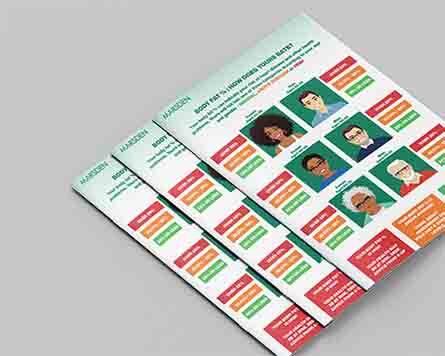Why Should You Monitor Body Fat Percentage?

If you are a healthcare professional or just a fitness fanatic at home, you will have heard of the term, body fat percentage. Sophisticated pieces of equipment, such as our best-selling MBF-6010 Body Composition Scale, not only weighs patients but provides a breakdown of their readings, one being Body Fat Percentage.
To provide you with some further insights, in this blog post we are going to share with you some of the reasons why you should regularly monitor body fat percentage if you want to understand your own, a clients or a patients general fitness.
General health indicator
Body fat percentage has been argued is a better insight into an individual’s health than weight alone. This is because people with a healthy body fat percentage are generally at a lower risk of developing obesity-related health issues such as heart disease, diabetes and certain cancers. Sometimes using weight alone, you are not able to identify as closely as you are with body fat percentage.
Fitness progress
When undertaking a fitness programme or aiming to improve overall health, body composition is a key indicator which can help assess progress more accurately than weight and appearance. As you engage in regular exercise and make dietary changes, your body composition might change even if the figure on the scale remains the same.
More accurate than BMI
BMI has been used for many years as a quick measure of an individual’s overall health. The issue with BMI is that it doesn’t differentiate between fat and muscle. Meaning that in many instances, people that are in peak physical condition with an athletic physique can be deemed obese on a BMI chat. Understanding body fat percentage can provide a more accurate understanding of an individuals body composition.
Support with nutrition and exercise plans
Whether you are an individual wanting to get fit, a healthcare professional monitoring patients or a fitness coach with clients, knowing body fat percentage can help tailor nutrition and exercise plans more effectively. If you are unaware of body fat percentage and you tailored the plan based on weight alone, it could lead to less effective plans.
Helps motivation and accountability
If an individual is on a fitness journey, it isn’t always a smooth and linear process. Muscle weighs more than fat and as people make progress and increase their strength, it can often mean that the figure on the scale isn’t decreasing as quickly as the individual would like. However, by monitoring body fat percentage, it can provide encouragement to the individual as they can see that they are losing body fat and gaining muscle.
Allows risk factor identification
A high body fat percentage, especially visceral fat, is linked to increased risk of metabolic syndrome, insulin resistance and cardiovascular diseases. By closely monitoring and being aware of an individual’s body fat percentage, it can allow fitness coaches and healthcare professionals to set a plan in place to rectify this issue.
Track long term changes
Fluctuations in weight happens to everybody. This can be caused by various factors including water retention, hormonal changes and many more. By monitoring body fat percentage, it can provide a much more true representation of an individuals health as it discounts body water, muscle mass and skeletal mass. This percentage can then be referenced at a later date to monitor changes.
Monitoring overall health long-term
As we have learnt from the points above, there are many benefits to regularly monitoring body fat percentage. This is why it is broadly discussed monitoring an individuals body composition alongside weight, BMI, blood pressure, cholesterol and waist circumference to help provide a true look at an individuals health.
We are very lucky that we have tools available that can monitor key health indicators in a non-invasive method. Our range of Body Composition Scales are easy to operate, extremely quick and provide the readings on a handy printout which can be stored as a reference point. You can learn more about our range of analysers here.
For a chart on body composition ranges which indicators, low, normal and high ranges, please click here to download.